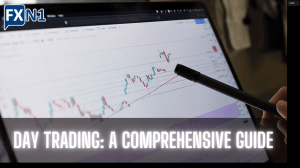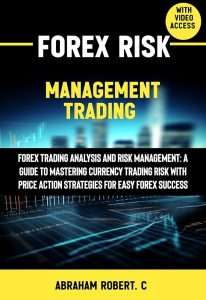A Beginner’s Guide to Forex Trading
Unlock the secrets of Forex trading! Learn the basics, understand the risks, and confidently navigate the global currency market. Start your trading journey today!
Forex trading, or foreign exchange trading, can seem daunting at first. It involves the buying and selling of currencies on a global market, operating 24 hours a day, five days a week. Understanding the basics is crucial before even considering entering this dynamic and potentially lucrative field. This guide will equip you with the foundational knowledge necessary to approach Forex trading with confidence and a clear understanding of the risks involved. Let’s embark on this journey together.
Understanding the Forex Market
The foreign exchange market is the largest and most liquid financial market globally. Unlike stock markets with centralized locations, Forex operates over-the-counter (OTC), meaning transactions happen directly between two parties, usually through a broker. This decentralized nature contributes to its high liquidity and 24-hour accessibility. The market’s size and constant activity mean opportunities abound, but also present considerable challenges.
Major Currency Pairs
The Forex market primarily deals in currency pairs. A currency pair represents the exchange rate between two currencies, such as EUR/USD (Euro/US Dollar) or GBP/USD (British Pound/US Dollar). Understanding the dynamics of these pairs is essential for successful trading. Major pairs involve the US dollar and another major currency, while minor pairs consist of two currencies other than the US dollar. Exotic pairs involve a major currency and a less-traded currency from an emerging market. Each pair has its own unique characteristics and volatility.
Understanding Pip Values
A pip (point in percentage) represents the smallest price movement in a currency pair. For most major pairs, a pip is 0.0001. Understanding pip values is crucial for calculating potential profits and losses. The value of a pip varies depending on the lot size (the amount of currency traded) and the exchange rate.
Leverage and Margin
Forex trading often involves leverage, which allows traders to control a larger position with a smaller initial investment (margin). While leverage can amplify profits, it also magnifies losses. Careful risk management is paramount when using leverage. Understanding margin calls, which occur when your account equity falls below the required margin level, is crucial to avoid forced liquidation of your positions.
Essential Tools and Resources for Beginners
Successful Forex trading requires more than just market knowledge; it demands the right tools and resources. A well-equipped trader will leverage various tools to analyze market trends, manage risks, and execute trades effectively. Let’s explore some essential resources for beginners.
Choosing a Forex Broker
Selecting a reputable broker is the cornerstone of your trading journey. Consider factors such as regulation, trading platform features, spreads (the difference between the bid and ask price), customer support, and educational resources. Thorough research is crucial to avoid scams and ensure a safe and reliable trading environment. Read reviews, compare offerings, and choose a broker that aligns with your trading style and experience level.
Charting Software and Technical Analysis
Charting software is an indispensable tool for analyzing price movements and identifying potential trading opportunities. Most brokers provide charting platforms with a range of technical indicators, such as moving averages, relative strength index (RSI), and MACD, which help traders identify trends and predict future price movements. Learning to interpret these indicators is crucial for successful technical analysis.
Fundamental Analysis Resources
Fundamental analysis involves examining economic data, political events, and other factors that can affect currency values. Staying updated on global economic news and understanding the impact of these events on currency pairs is crucial for informed decision-making. Utilize reputable news sources, economic calendars, and analytical reports to gain insights into market movements.
Developing a Trading Strategy
A well-defined trading strategy is your roadmap to success. It outlines your approach to the market, including your entry and exit points, risk management rules, and trading style. Without a clear strategy, you’re essentially gambling, not trading.
Defining Your Trading Style
There are several trading styles, including scalping (short-term trades), day trading (holding positions for a single day), swing trading (holding positions for several days or weeks), and position trading (holding positions for months or even years). Determine which style best suits your personality, risk tolerance, and available time commitment.
Setting Realistic Goals and Expectations
Forex trading is not a get-rich-quick scheme. Set realistic goals and manage your expectations. Focus on consistent profitability rather than chasing unrealistic returns. Understand that losses are inevitable, and develop a strategy to manage them effectively.
Risk Management Techniques
Effective risk management is paramount in Forex trading. Never risk more than you can afford to lose. Use stop-loss orders to limit potential losses, and take profits when your targets are met. Diversify your portfolio to mitigate risk and avoid overexposure to any single currency pair.
Learning and Continuous Improvement
Forex trading is a continuous learning process. Stay updated on market trends, refine your strategy, and adapt to changing conditions. Never stop learning.
Utilizing Educational Resources
Numerous resources are available to help you enhance your Forex trading skills. Take advantage of online courses, webinars, books, and articles to expand your knowledge and improve your trading techniques. Many brokers offer educational materials to their clients. Continuous learning is key to long-term success.
Backtesting and Simulated Trading
Before risking real money, practice with a demo account. This allows you to test your trading strategy without financial risk. Backtesting involves analyzing historical data to evaluate the performance of your strategy. Both practices are essential for refining your approach and gaining confidence before live trading.
Joining Forex Communities
Engaging with other traders can provide valuable insights and support. Join online forums, attend webinars, and network with experienced traders to learn from their experiences and share your own. However, always critically evaluate information received from others and avoid blindly following advice.
Understanding Market Volatility and Economic Indicators
Market volatility is a key factor influencing currency prices. News events, economic data releases, and geopolitical situations can cause significant price swings. Understanding these factors is crucial for navigating the market effectively.
Major Economic Indicators
- Gross Domestic Product (GDP): A measure of a country’s economic output.
- Inflation Rate: The rate at which prices are rising.
- Interest Rates: The rates set by central banks, influencing borrowing costs.
- Unemployment Rate: The percentage of the workforce that is unemployed.
- Consumer Price Index (CPI): A measure of the average change in prices paid by urban consumers for a basket of consumer goods and services.
Geopolitical Events and Their Impact
Geopolitical events, such as elections, wars, and political instability, can significantly impact currency values. Understanding the potential impact of these events is crucial for informed decision-making. Staying informed about global events through reputable news sources is essential.
Analyzing Charts and Identifying Trading Opportunities
Chart analysis is a core skill for Forex traders. Learning to interpret charts and identify patterns can help you predict future price movements and identify potential trading opportunities.
Candlestick Patterns
Candlestick patterns provide visual representations of price movements. Learning to recognize common candlestick patterns can help you identify potential reversal points or continuation patterns. Studying candlestick patterns is a fundamental aspect of technical analysis.
Support and Resistance Levels
Support and resistance levels represent price points where the market has historically shown difficulty breaking through. Identifying these levels can help you determine potential entry and exit points for your trades. Understanding support and resistance is vital for risk management.
Trend Lines and Moving Averages
Trend lines and moving averages help identify the overall direction of the market. Learning to use these tools can help you identify potential trading opportunities within the prevailing trend. Combining trend lines and moving averages with other indicators enhances trading accuracy.
- Moving Averages: Calculate the average price over a specific period, smoothing out price fluctuations and identifying trends.
- Trend Lines: Connect significant price points to visualize the direction of a trend.
Forex trading offers exciting opportunities but demands discipline, knowledge, and consistent effort. Mastering the fundamentals, developing a robust strategy, and continuously learning are key to long-term success. Remember to always manage your risk and never invest more than you can afford to lose. The journey to becoming a successful Forex trader is a marathon, not a sprint. Consistent effort and a commitment to continuous learning will be your most valuable assets.
Successful Forex trading requires patience, adaptability, and a willingness to learn from both successes and failures. It’s a dynamic market, constantly evolving, demanding continuous adaptation and refinement of your strategies. While the potential for significant profits exists, the inherent risks must never be underestimated. Remember that knowledge and discipline are the cornerstones of responsible and potentially profitable Forex trading. This journey is a marathon; persevere, learn, and adapt to the ever-changing market landscape.
Consistent application of your trading plan, coupled with a keen understanding of market dynamics, will significantly improve your chances of success. Never stop learning; the Forex market is a vast and complex ecosystem requiring continuous study and adaptation. By combining sound knowledge with careful risk management, you can navigate the complexities of Forex trading and potentially achieve your financial goals.
Embrace the learning process, and remember that even seasoned traders encounter setbacks. Learn from your mistakes, adapt your strategies, and persistently strive for improvement. The rewards of successful Forex trading can be significant, but they require dedication, patience, and a commitment to continuous learning. Your success hinges on a combination of knowledge, discipline, and a well-defined trading plan. With dedication and persistence, you can navigate the challenges and unlock the potential of this exciting market.
Ultimately, Forex trading is a journey of continuous learning and adaptation. The more you learn and the more disciplined you are, the greater your chances of long-term success. Remember that success in Forex trading is a marathon, not a sprint, demanding persistence, patience, and a commitment to lifelong learning.







